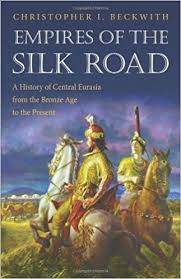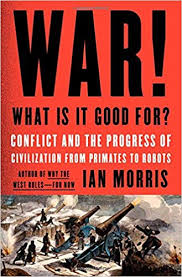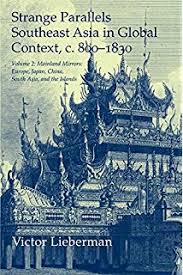 Taking after Edward Gibbon it is often stated in some histories that the Islamicization of Europe was probably prevented by the defeat of the Muslim armies coming up from Spain by Charles Martel at the Battle of Tours.
Taking after Edward Gibbon it is often stated in some histories that the Islamicization of Europe was probably prevented by the defeat of the Muslim armies coming up from Spain by Charles Martel at the Battle of Tours.
This is probably wrong for several reasons. First, with hindsight, it seems clear that people like to anchor on salient contingent events which seem plausible bifurcations in our timeline. This is a cognitive bias. The fact is that sally north of the Pyrenees into Francia was probably simply a probing raid, not the precursor to a full-scale invasion. At least that is the impression given by the Muslim textual records, which barely mention this battle (in contrast to the second Siege of Constantinople, which had occurred a few decades earlier). A raid is not a campaign.
 Additionally, Muslim armies and corsairs operated north of the Pyrenees and in what became southern France for several centuries after 732. The defeat at the Battle of Tours was simply another battle in the gradual rollback of Islamic depredations in the Western Mediterranean. Perhaps more important was the shift of the world-wide Islamic polity eastward with the emergence of the Abbasids in 750, and the detachment of western Muslim domains from Abbasid authority (a renegade Umayyad even reigned in Spain!).
Additionally, Muslim armies and corsairs operated north of the Pyrenees and in what became southern France for several centuries after 732. The defeat at the Battle of Tours was simply another battle in the gradual rollback of Islamic depredations in the Western Mediterranean. Perhaps more important was the shift of the world-wide Islamic polity eastward with the emergence of the Abbasids in 750, and the detachment of western Muslim domains from Abbasid authority (a renegade Umayyad even reigned in Spain!).
 Finally, limits of supply-lines and ecological constraints probably meant that a protracted campaign in Europe would have met difficulties that were less relevant for North Africa and Spain. The conquest of North Africa and Spain occurred in less than a generation (the conquest of the Maghreb was an opportunity opened during a period of tumult in Byzantium in the late 7th century) and were still recent when the Battle of Tours occurred. Additionally, ecologically North Africa and much of Spain were familiar to the Arabs, and in the latter case Berbers. This is not the case with Francia and much of Northern Europe. It is not well known, but Arab armies sallied north of the Caucasus into the territory of the Khazars for several centuries, but ultimately failed in permanent conquests, probably in part due to lack of preparation and experience with harsh cold (the lack of fitness of Arab armies for the harsh winters is noted in the texts).
Finally, limits of supply-lines and ecological constraints probably meant that a protracted campaign in Europe would have met difficulties that were less relevant for North Africa and Spain. The conquest of North Africa and Spain occurred in less than a generation (the conquest of the Maghreb was an opportunity opened during a period of tumult in Byzantium in the late 7th century) and were still recent when the Battle of Tours occurred. Additionally, ecologically North Africa and much of Spain were familiar to the Arabs, and in the latter case Berbers. This is not the case with Francia and much of Northern Europe. It is not well known, but Arab armies sallied north of the Caucasus into the territory of the Khazars for several centuries, but ultimately failed in permanent conquests, probably in part due to lack of preparation and experience with harsh cold (the lack of fitness of Arab armies for the harsh winters is noted in the texts).
Remember that the conquest of much of the more frigid regions of peripheral Europe occurred under the Ottoman Turks, who were culturally an Inner Asian people from Siberia.
Which brings us to India and the beginning of widescale Muslim intrusions under Mahmud of Ghazni. I immediately pointed out below that the true conquest, as opposed to raiding, did not occur until the late 12th century. But, to be honest, I think this is a minor detail, and the fact is that Muslim incursions were inevitable, and probably like to succeed to some extent, no matter the outcome of a particular battle.
The key here is less about Islam, and more about the period between 500 AD and 1500 AD, and what you see across Eurasia in terms of the balance of power between mobile people from Inner Asia, and the agricultural civilizations. In books as distinct as War! What Is It Good For? and Strange Parallels the authors observe that in the period after 500 AD, until the rise of “gunpowder empires”, pastoralists from the Inner Asian steppe were dominant, destructive, and overwhelming military forces (the Mongol conquests were the apotheosis, but not exceptional).
In Strange Parallels, the author reminds us that only a few societies among the Eurasian oikoumene polities avoided major shocks from pastoralists. Mainland Southeast Asia, Japan, and the far west of Europe were insulated from their depredations by and large.* The reason for this was almost certainly geography: Japan was separated by a sea from the mainland, while Southeast Asia and Western Europe were ecologically difficult for pastoralists to penetrate as well as distant. In “mainland Europe” the settlement of the Hungarian basin by repeated groups of steppe pastoralists, beginning with the Scythians and ending with the Magyars, is partly a function of the fact that its broad flat expanses were the westernmost suitable pastorage for large herds of horses typical on the Eurasian steppe.
In the centuries after 500 AD, most of the major civilizations of Eurasia were impacted by migrations of nomads seeking greener pastures. In China, the northern half of the country was occupied by various groups of Turkic origin between the Han and Sui-Tang. The southern half the country maintained local rule, in part because of the difficulty of penetration by pastoralists of the Yangzi basin. In the Near East, Persia was buffeted by both Inner Asians from the north, and Arabs from the southwest. The Arabs conquered Persia and severely diminished Byzantium. Like China, the persistence of part of Byzantium is probably due to geography: Constantinople occupied a strong position on the other side of Bosporus and could be provisioned by sea when encircled. The Persian heartland was much more exposed to the Arab advance (in contrast, the conquest of Turan took many centuries).
Which brings us to India. The pastoralist eruptions that impacted Persia also affected India. But, the initial impacts were of more political than cultural relevance. Groups like the Huna were absorbed into the South Asian cultural matrix.
The arrival of the Turks and Afghans after 1000 AD was different. These people, now Muslims, were not absorbed into the South Asian cultural matrix. The reason is obvious: with Islam, they had their own high culture, one which was assimilative insofar as native converts could be somewhat integrated into the ruling class, and unassimilable from the perspective of native elites due to its ideological and ritual predelictions.
There is here a contrast to the Mongols who conquered China in the 13th century, and the Manchus who conquered it in the 17th century.
First, the raw numbers of Mongols and Manchus in comparison to Chinese was probably far less than the potential mobile Muslim populations which might have settled in India. In fact, Mongols who migrated west were eventually all assimilated into the Turkic or Persian cultural context due to the force of numbers (though they often retained genealogical awareness of part Mongol origins, as the Hazara and Timurids both did despite a Persian and Turkic cultural background).
Second, neither the Mongols or Manchus brought a hegemonic and oppositional high culture. The Mongols were predominantly shamanists, though a minority were Eastern Christians (Kubilai Khan’s mother was a member of the Church of the East, as was the norm among her tribe of Turks), and some were Muslims (the mass conversion of the Mongols to Buddhism occurred in the 16th century, prior to which they dabbled in Islam, Christianity, and Buddhism, as well as their dominant shamanism). The Manchus generally favored shamanism, or, as was the norm among northern border peoples in China, a form of Buddhism. Neither of these prevented assimilation to the Chinese substrate, a major problem for the Manchus over the centuries (like Mongol ancestry, in today’s China “Manchu” national origin is more a matter of genealogy than culture, as the Manchu language is now moribund, only a few thousand out of millions of Manchu speak it).
In regard to India I want to pinpoint a few key issues:
- Starting around 1000 AD the whole zone of pastoralist western Inner Asia began to adopt Islam as its standard religious ideology. To a great extent, West Asian Muslim societies were captured by Inner Asians, and they served Inner Asian aims and goals. Societies such as Egypt were ruled for a thousand years by Inner Asians, who created a Mamluk system which depended upon continuous migration and recruitment from Inner Asia.
- India was arguably more “exposed” to this culture than China due to geography. While Inner Asians adjacent to Muslim West Asia adopted Islam, those nearest to China tended to be shamanist or Buddhist (Magyars and Bulgars adopted Western and Eastern Christianity respectively).
- Mobile Inner Asians, of any religion, were “natural” soldiers (though to be fair, it seems a consistent pattern that Inner Asians, such as Mongols, who were shamanist were less “civilized” and often better soldiers than those who converted to “higher religions”). In the period between 500 AD and 1500 AD mobile mounted warriors had major advantages in continuous warfare against settled peoples. The main way that settled societies held the pastoralists in check was through bribery or co-option, or both. The Byzantines and Chinese deployed both, elevating frontier peoples with mobile fighting skill to their ruling castes, as well as paying nomadic groups tribute. By and large West Asian Muslim societies co-opted and were conquered by Turks (or their Caucasian federates).
- India was subject to the same dynamic as West Asian societies: pastoralists from Inner Asia continuously migrated into the subcontinent for opportunities of exploitation and domination down to the early colonial period. Each wave of migrants was more “raw,” and brought alien and alienated sensibilities, to the subcontinent.
In discussions with individuals of South Asian origin, there is some exploration of the possibility that Indians, Hindus, were naturally a less vigorous and martial people than Muslims. That Islam was a muscular and masculine ideology, while Hinduism was feminine and passive (Hindu nationalism then emerging through some dialectical process as a superior synthesis; muscular, masculine, and Hindu).
I believe that this analysis suffers mostly from the issue of confounds. In the period after 1000 AD with the exception of the Mongols under Genghis Khan, the Inner Asian intruders were all Muslim because they were drawn from the broad zone of Inner Asia where Islam was the dominant high culture. The reality is that after 1000 AD Iranian speaking peoples also were dominated by numerically smaller groups of Inner Asians. Reza Shah in the 20th century was the first major ethnic Iranian founder of a dynasty to dominate most of Iran since the Buyids and Samanids.
The difference between Iran and India is that the former eventually became majority Muslim, while the latter remained majority non-Muslim. Iran’s relative pliability can even be seen in sect, as the Turco-Kurdish Safavids forcibly converted the Persians from their predominant practice of Sunni Islam to Twelver Shia Islam in the 16th century. But of course, demographics is an important variable here. There were probably always an order of magnitude more Indians than Iranians. In Turan Turkic languages became dominant, and in Iran proper, they remain a substantial minority. In India, Turkic languages never took hold, presumably because the numbers were never sufficient. An analogy here might be made with Egypt, where the Mamluk caste drawn from non-Arabs eventually Arabicized in language and identity.
As a follow-up to my post, India as a hydra against Islam, I will suggest then a two things:
- India is not comparable to West Asia because it is a more robust civilization with more demographic heft. Like parts of Europe it “absorbed” the Islamic demographic impact without being totally captured. The difference here is not qualitative, but quantitative. There were so many more Indians than Iranians that erosion of indigenous culture took much longer and was never complete.
- Unlike parts of Europe which absorbed the Inner Asian shock, such as Russia, India never managed to reorganize and turn the tide. To some extent, the Russians adopted Inner Asian tactics with their Cossack bridges (some of the Cossacks were assimilated Muslim Tatars).
But, the emergence of the Maratha in the 18th century and the Sikh Empire in the 19th century, illustrate that a South Asian counter-reaction was occurring eventually. The reality is that this period saw the decline of Inner Asian military superiority because of mass mobilization of infantry with shock weapons (guns, artillery), which were finally decentering mounted warriors after nearly 1,500 years of supremacy. Though the later Mughals relied on cadres of Inner Asians, they were fundamentally a “gunpowder empire”, and the logic of mass mobilization means that it is unlikely that in the long term a culturally alienated elite could have persisted. The French republican armies’ defeats of rival powers showed European nation-states the power and necessity of mass mobilization.
Several years ago an Indian American friend of Hindu nationalist sympathies expressed to me the opinion that if it weren’t for the arrival of the British, the Marthas might have spearheaded the emergence of a new Indo-centric polity. At the time I was skeptical because Indians lacked access to horses, which gave Inner Asians an advantage. But now seeing the logic of massed infantry with guns, it does seem that the Inner Asian, and therefore Muslim, the advantage would eventually have given away to the force of numbers.
Of course, we’ll never get to see how history would have turned out. The British had different plans.
Note: This post was inspired by my reading of Imperial China 900-1800.
Addendum: I won’t tolerate stupid comments on this post in the beginning. Please understand that if I delete I think your comment was stupid. Perhaps you are smart, so try harder!
* The Mongol directed invasions of Japan, Burma, and Java, were arguably less a function of steppe pastoralism, than the militaristic Yuan co-opting and projecting the force capabilities of the Chinese state system.


 From my personal blog:
From my personal blog: